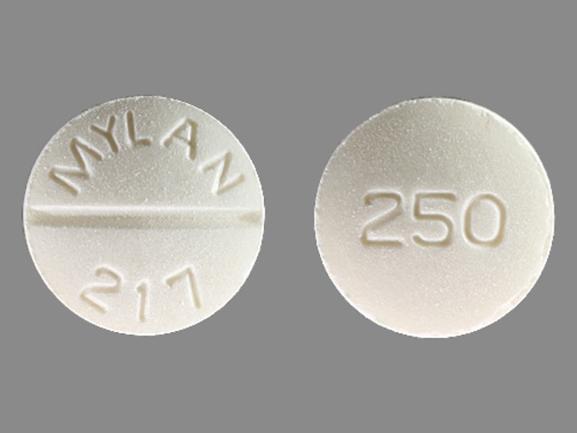Tolazamide Side Effects
Medically reviewed by Drugs.com. Last updated on Jun 6, 2023.
Applies to tolazamide: oral tablet.
Serious side effects of Tolazamide
Along with its needed effects, tolazamide may cause some unwanted effects. Although not all of these side effects may occur, if they do occur they may need medical attention.
Check with your doctor immediately if any of the following side effects occur while taking tolazamide:
Rare
- Abdominal or stomach pain
- chills
- clay-colored stools
- dark urine
- diarrhea
- difficulty swallowing
- dizziness
- fast heartbeat
- fever
- headache
- hives
- itching
- loss of appetite
- puffiness or swelling of the eyelids or around the eyes, face, lips, or tongue
- rash
- shortness of breath
- skin rash
- tightness in chest
- unpleasant breath odor
- unusual tiredness or weakness
- vomiting of blood
- wheezing
- yellow eyes or skin
Incidence not known
- Agitation
- back, leg, or stomach pains
- black, tarry stools
- bleeding gums
- blood in urine or stools
- chest pain
- coma
- confusion
- convulsions
- cough or hoarseness
- decreased urine output
- depression
- difficulty breathing
- fast or irregular heartbeat
- fatigue
- fever with or without chills
- fluid-filled skin blisters
- general body swelling
- general feeling of tiredness or weakness
- hostility
- increased thirst
- irritability
- itching of the skin
- lethargy
- light-colored stools
- lower back or side pain
- muscle pain or cramps
- muscle twitching
- nausea or vomiting
- nosebleeds
- painful or difficult urination
- pale skin
- pinpoint red spots on skin
- rapid weight gain
- seizures
- sensitivity to the sun
- skin thinness
- sore throat
- sores, ulcers, or white spots on the lips or in the mouth
- stupor
- swelling of the face, ankles, or hands
- swollen or painful glands
- unusual bleeding or bruising
Get emergency help immediately if any of the following symptoms of overdose occur while taking tolazamide:
Symptoms of overdose
- Anxiety
- cold sweats
- cool, pale skin
- increased hunger
- nervousness
- nightmares
- shakiness
- slurred speech
Other side effects of Tolazamide
Some side effects of tolazamide may occur that usually do not need medical attention. These side effects may go away during treatment as your body adjusts to the medicine. Also, your health care professional may be able to tell you about ways to prevent or reduce some of these side effects.
Check with your health care professional if any of the following side effects continue or are bothersome or if you have any questions about them:
Less common
- Indigestion
- passing of gas
Rare
- Feeling of constant movement of self or surroundings
- sensation of spinning
Incidence not known
- Redness or other discoloration of skin
- severe sunburn
For Healthcare Professionals
Applies to tolazamide: oral tablet.
General
The most commonly reported adverse reactions have included gastrointestinal disturbances such as nausea, epigastric fullness, and heartburn.[Ref]
Metabolic
Very rare (less than 0.01%): Disulfiram-like reactions
Frequency not reported: Hypoglycemia
Frequency not reported: Hepatic porphyria[Ref]
Gastrointestinal
Gastrointestinal disturbances such as nausea, epigastric fullness, and heartburn tend to be dose related and may disappear when dosage is reduced.[Ref]
Common (1% to 10%): Nausea, epigastric fullness, heartburn[Ref]
Cardiovascular
In the University Group Diabetes Program (UGDP) study, cardiovascular mortality rate was approximately 2.5 times higher in patients treated for 5 to 8 years with diet plus tolbutamide 1.5 g per day compared with that of patients treated with diet alone. The UGDP study was a long-term prospective clinical trial designed to evaluate the effectiveness of glucose lowering drugs in preventing or delaying vascular complications in patients with type 2 diabetes mellitus (n=823). Tolbutamide was stopped based on the increase in cardiovascular mortality; a significant increase in total mortality was not observed, but stopping the drug may have limited the ability to measure that. In view of the close similarities in mode of action and chemical structure among sulfonylureas, these results may apply to other drug in this class.[Ref]
Sulfonylureas:
Frequency not reported: Increased cardiovascular mortality[Ref]
Hypersensitivity
Frequency not reported: Hypersensitivity reactions[Ref]
Hypersensitivity reactions described as skin reactions, e.g. pruritus, erythema, urticaria, and morbilliform or maculopapular eruptions occurred in 0.4% of patients during clinical trials. These may be transient and may disappear despite continued therapy; however, if skin reactions persist, this drug should be discontinued.[Ref]
Nervous system
Uncommon (0.1% to 1%): Dizziness, headache, weakness[Ref]
Hepatic
Rare (less than 0.1%): Cholestatic jaundice[Ref]
Endocrine
Frequency not reported: Hyponatremia
Sulfonylureas:
Frequency not reported: Syndrome of inappropriate antidiuretic hormone (SIADH) secretion[Ref]
Other
Uncommon (0.1% to 1%): Fatigue, malaise, vertigo[Ref]
Hematologic
Sulfonylureas:
Rare (less than 0.1%): Leukopenia, agranulocytosis, thrombocytopenia, hemolytic anemia, aplastic anemia, pancytopenia
Dermatologic
Uncommon (0.1% to 1%): Allergic skin reactions (pruritus, erythema, urticaria, and morbilliform or maculopapular eruptions)
Sulfonylureas:
Frequency not reported: Photosensitivity, porphyria cutanea tarda[Ref]
More about tolazamide
- Check interactions
- Compare alternatives
- Drug images
- Dosage information
- During pregnancy
- Drug class: sulfonylureas
- Breastfeeding
Patient resources
Other brands
Related treatment guides
References
1. Product Information. Tolazamide (tolazamide). Mylan Pharmaceuticals Inc. 2016.
Further information
Always consult your healthcare provider to ensure the information displayed on this page applies to your personal circumstances.
Some side effects may not be reported. You may report them to the FDA.

